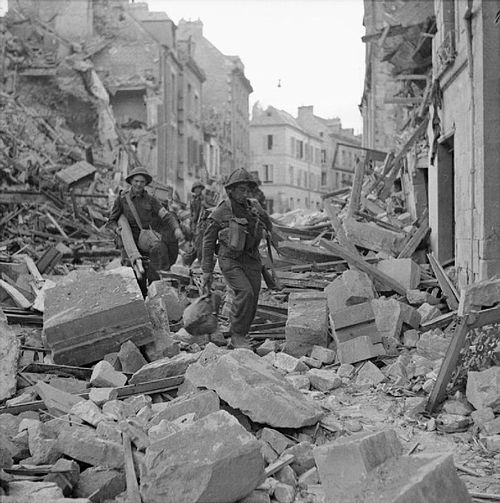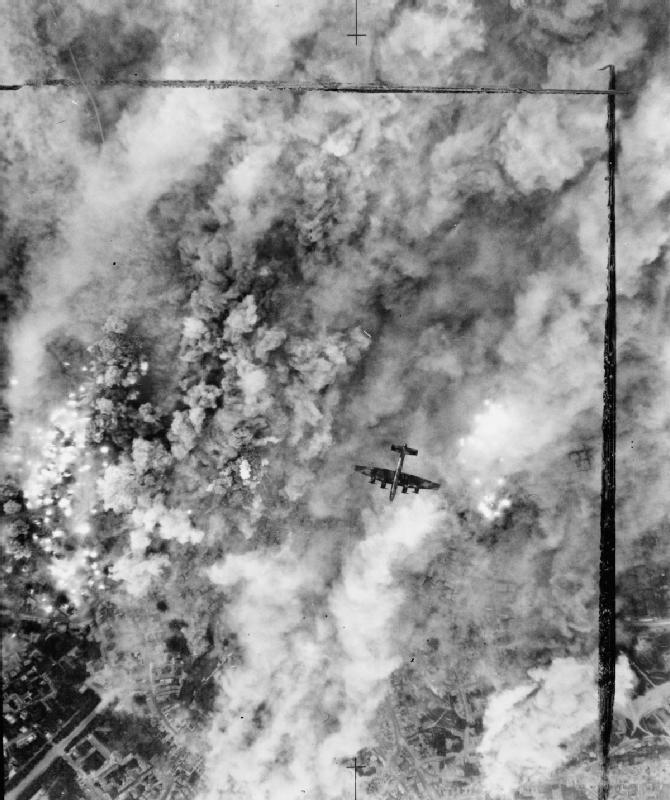Operations
Operations
Operation Charnwood 1944
After the successful landings on the beaches of Normandy on June 6, 1944 (D-Day), one of the main Allied objectives was to capture the strategic city of Caen. Situated on the Orne River, Caen was a critical transportation and communication hub for German forces, and its capture was essential to ensure the success of the Allied advance into France.
However, the initial Allied plans to capture Caen within the first few days of the invasion were delayed due to fierce German resistance, including elite units like the SS Panzer divisions. What was expected to be a relatively quick operation turned into a drawn-out and bloody battle, lasting over a month and requiring multiple operations to dislodge the entrenched German forces.
At the request of General Montgomery, RAF Bomber Command mounted its first attack against enemy troop positions in France in support of Allied forces in Normandy in Operation Charnwood. A total of 467 aircraft attacked German positions holding up the Canadian 1st and British 2nd Armies north of Caen a month after the landings.

British troops of I Corps pick their way through the rubble of Caen, 9 July 1944 after the air attack.
(Credit: Sergeant Christie No 5 Army Film & Photographic Unit / Imperial War Museums)
On the night of 7 July 467 Lancaster and Halifax aircraft of RAF Bomber Command attacked Caen, dropping over 2,000 long tons (2,000 t) of bombs on the city. Although intended mainly to facilitate the Anglo-Canadian advance and to prevent German reinforcements from reaching the battle or retreating through Caen, a secondary consideration was the suppression of the German defences.
In this the bombing largely failed, the main German armour and infantry positions to the north of Caen remained intact. Several tanks were hit and temporarily disabled but only two Panzer IV of the 12th SS Panzer Division were destroyed. General Miles Dempsey, in command of the British Second Army, was more concerned with the morale-boosting effect of the bombing on his troops, than any material losses it might inflict on the Germans.

A Handley Page Halifax bomber of No. 4 Group RAF over northern Caen after the bombing of 7 July.
(Credit: Imperial War Museums)
The pathfinders of 625 Squadron, dropping the target markers for the bombers, were instructed not to allow the target zone to “drift back” towards the Allied lines as had been the tendency in earlier operations. Together with the cautious shifting of the target zone during the planning stage, many of the markers were dropped too far forward, pushing the bombed zone well into Caen, further away from the German defences.
By 22:00 on 7 July, the bombers had departed, leaving 80 percent of the north of Caen destroyed. Caen University was particularly hard hit, starting chemical fires that soon spread. At 22:50, six squadrons of de Havilland Mosquito bombers attacked individual targets and ten minutes later the 636 guns of the assaulting divisions opened fire, with the battleship HMS Rodney and other ships adding their support. The bombardment was intensified by the artillery of VIII Corps against the villages north of Caen, to eliminate German strong points before the infantry assault began.
The result was mixed, much of the northern suburbs of the town was destroyed, with streets impassable by vehicle which hampered the British and Canadians Armies as much as it did the Germans.
Such was the damage that the Anglo-Canadian armies were unable to rapidly follow up the bombardment with ground forces. Any advantage from the temporary suppression of German will to resist was lost. Instead, the Germans were able to establish new defences, which blocked the route to the Falaise plain and it would take another month to completely gain control.
The bombardment had terrible consequences for the civilian population. Estimates of losses amounted to nearly four hundred civilians killed and many more injured. Despite this, and destruction of up to 90% of the city, nonetheless the Allied armies were welcomed as liberators.